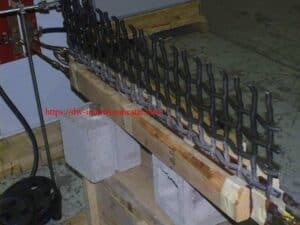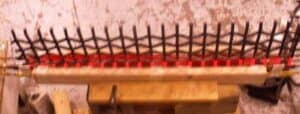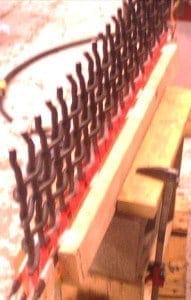Induction Annealing Steel Wire With High Frequency Heating System
Objective To heat 3” (76.2mm) from the end of the wire on a woven wire cloth 60” (1.52m) long. This prepares the wire mesh for bending in a press brake.
Material Woven wire cloth (steel) made of 1/2” (12.7) diameter wire, 60” (1.52m) long. Wires are 1.5” (38.1) apart
Temperature 1400 ºF (760 ºC)
Frequency 60 kHz
Equipment • DW-HF-60kW induction heating system, equipped with a remote workhead containing three 25μF capacitors for a total of 75μF
• An induction heating coil designed and developed specifically for this application.
Process A two turn oval coil is used to heat the woven wire. The woven wire is placed in the coil and heated for 50 seconds to soften a 60” (1.52m) length of the wire 3” (76.2mm) deep. The woven wire is then placed in a press brake for the bending process.
Results/Benefits Induction heating provides:
• Faster production process
• High efficiency, low energy costs compared to gas furnace
• Fast, controllable process
• Hands-free heating that involves no operator skill for manufacturing




